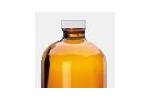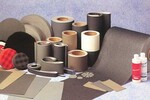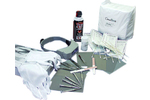- ▶
- Heaters/Source
- ▶
- Agilent Heaters and SensorsMass Spectrometry, Scientific Supplies & ManufacturingScientific Instrument Services 5973 Source Heater Tamper Resistant Allen Wrench 5973/5975 Quad Sensor 5985 Source Heater Assembly Agilent Interface Heater Assembly 5971 Interface Heater

- ▶
- MS Instrument Cleaning Supplies
- Lab/CleanMicro-Mesh® (Fine Cushioned Abrasive) Aluminum Oxide Cleaning Abrasive Fiberglass Cleaning Brushes Swabs and Applicators Nylon and Latex Gloves Cleaning Wipes SIS MS Source Cleaning Kits Dust-Off® Hurricane Canless Air System Wheaton Bottles Wheaton Vials Wheaton Closures Sterile Vials - Bottle, Stopper, and Cap - All Together Certified Sterile Kimble Chase Clear Serum Vials Soil Sampling Kits Crimpers and Decappers Temperature Measurement & Recording Devices Bullet Blender® Homogenizer The SW 110 Multi-Purpose Spot Welder New Era Syringe Pump Systems Ohaus MB Series Moisture Analyzers Celestron® Handheld Digital Microscope (HDM) Checkit® Pipette Accuracy Test Greenwood Lab Supplies Next Advance Lab Products Catalog Page G1

- ▶
- Micro-Mesh®Sheets Rolls Discs Pads Nail Files Tufbuf Micro-Gloss Tape Belts Sanding Swabs Polishing Tool Quick-Shine Buffers Kits - Plastic (power) Kits - Plastic (hand) Kits - Craftsman, Wood, Metal Kits - Automotive & Headlight Restoration Kits Kits - Aircraft Window Reference - Grit Size Reference - MSDS Sheets, Brochures, Instructions, Kits Print Catalog - Micro-Mesh Catalog Page A63 Catalog Page A64 Catalog Page A65 Catalog Page A66 Catalog Page G3 Catalog Page G4 Catalog Page G5 Catalog Page G6 Catalog Page G7 Catalog Page G8

- LiteratureApplication Notes Adsorbent Resins Guide Mass Spec Tips SDS Sheets FAQ MS Calibration Compound Spectra Manuals MS Links/Labs/ Organizations MS Online Tools Flyers on Products/Services Scientific Supplies Catalog About Us NextAdvance Bullet Blender® Homogenizer Protocols Micro-Mesh® Literature Instrumentation Literature Agilent GC/MS Literature SIS News / E-Mail Newsletter NIST MS Database - Update Notifications

- ▶
- Reference - MSDS Sheets, Brochures, Instructions, KitsMicro-Mesh Regular - Description of Micro-Mesh Regular Micro-Mesh MX - Description of Micro-Mesh MX for Metal Finishing Benefits of Micro-Mesh - What Makes Micro-Mesh So Special Ergonomic Benefits of Micro-Mesh - Human Factors, Engineering and Micro-Mesh TufBuf Polishing Pads - Polishing and Buffing Pads Guidelines for Acrylic Finishing Guideline for Making Belts with Micro-Mesh Micro-Gloss Instructions Metal Finishing with Micro-Mesh Random Orbital sanding with Micro-Mesh Solid Surface Finishing with Micro-Mesh Urethane Coating rectification Procedures Wood Finishing Procedures with Micro-Mesh Micro-Mesh Grit Size Conversion Chart Aquarium Restorer Kit Instructions Belt Finishing with Micro-Mesh Burn Kit Instructions Clear Seas Acrylic Kit Instructions Clear Seas Vinyl Kit Instructions Craft Kit Instructions Heavy Damage Removal Kit Instructions Light Damage Removal Kit Instructions KR-70 Acrylic Restoration Kit Instructions Maintenance Kit Instructions Micro-Mesh Anti-Static Cream Final Finish Micro-Finish Micro-Gloss Micro-Gloss # 5 TufBuf Polishing Pad

- ▶
- Aquarium Restorer Kit Instructions (This Page)
The material in this kit will remove scratches and scuffs from acrylic aquariums.
AQUARIUM INSIDE SURFACES
These abrasives can be used on the inside of the tank with water and fish in place. However, contamination of the water by acrylic particles will occur. This contamination may not be compatible with your fish. We recommend removing water and fish from the aquarium before beginning work.
AQUARIUM OUTSIDE SURFACES
You can use the abrasives either wet or dry. We suggest using them wet for the best surface finish.
A. CONTENTS
- 1. (1) 3´ x 4´ Sheet Each of 1800, 2400, 3200, 4000, 6000, 8000
- 2. (1) 2´ x 3´ Foam Block
- 3. (1) 1 Oz. Bottle of Anti-Static Cream
- 4. (1) Cotton Flannel Cloth
- 5. (1) Instructions
B. DAMAGE REMOVAL
This part of the procedure will take approximately 70% of the work and is the most important. Work carefully, allowing plenty of time. You must remove all the damage to the bottom of the deepest scratch or nick. Deep damage should be removed with common wet/dry sandpaper (NOT INCLUDED IN THIS KIT).
VERY FINE SCRATCHES: Begin with either 4000 or 6000
HAIRLINE SCRATCHES/LIGHT SCUFFS: Begin with 2400 or 3200
FINE SCRATCHES: Begin with either 1800 or 400 grit wet/dry sandpaper
DEEP SCRATCHES (can be felt with fingernail): Begin with 320 wet/dry sandpaper
GROOVES: Begin with120 or 220 grit wet/dry sandpaper
When changing abrasive grades be sure to change sanding directions 90º (North and South with one grade, switching to East and West with the next grade)
C. THE REMOVAL PROCEDURE
- Wrap the suggested abrasive around the foam block. Carefully work the damaged area using a straight-line motion. DO NOT USE A CIRCULAR MOTION. Keep firm pressure on the block. Keep sanding material and surface free of dust and contamination. Do not try to remove one scratch at a time. Spread the sanding pattern 4-6 inches with each step. Single point damage like cigarette burns, nicks or cuts must not be spot sanded. Distortion with result.
- All damage must be removed in the first step. Evaluate your efforts after 2-3 minutes. If removal rate seems slow, move to next coarser grit. Evaluate this coarser grade and move coarser if necessary. Remember, the heavier the scratches you put into the surface, the more time and steps it will take to remove them.
- When the damage is removed, move to the next finer grade until you have finished with the 400 grit wet/dry.
When damage is removed, your surface should have a uniform scratch pattern running in one direction. If you started with common wet/dry sandpaper, begin with the abrasives in your kit after the surface has been reduced to a 400 grit scratch pattern. If your damage was slight and you started the procedure with the kit abrasives, simply continue through all of the grades in the kit.
THE RESTORAL PROCEDURE
- Wrap the 1800 around the foam block. Carefully work the damaged area using a straight-line motion. DO NOT USE A CIRCULAR MOTION. Continue until all damage is removed. If you have previously removed severe damage (see Damage Removal) using sandpaper, continue working until that 400 grit pattern is removed.
- Wrap 2400 around the foam block and continue, this time crossing (+) your 1800 scratch pattern. Make sure that you remove all the 1800 scratch pattern before going on to Step 3.
- Wrap 3200 around foam block, change your motion to cross the 2400 scratch pattern and continue as outlined in Step 1.
- Proceed as above through all the abrasive grades in your kit.
- When you are finished with the last grade and are satisfied with the surface appearance, clean the surface carefully. If you are working on the outside of the aquarium, apply a drop of ANTI-STATIC CREAM and spread it with your fingertips over a small area. Wipe off quickly and completely with the flannel cloth. This procedure removes the static electricity that could cause dirt to be drawn back to the surface.
For larger areas, work 1-1 ½ sq. ft. at a time, overlapping each new area slightly until the entire work surface has been covered. Do not allow the ANTI-STATIC CREAM to dry on the surface. If it dries it will be very hard to remove. In hot areas, work in small areas.
CARE AND MAINTENANCE
Use clean fresh water with a drop of detergent and flannel for cleaning. Avoid paper towels, napkins, and tissue.
IMPORTANT NOTICE: SIS and Micro-Surface Finishing Products, Inc. ("Micro") MAKES NO WARRANTIES, EXPRESS OR IMPLIED, INCLUDING, BUT NOT LIMITED TO, ANY IMPLIED WARRANTIES OF MERCHANTABILITY OR FITNESS FOR A PARTICULAR PURPOSE. User is responsible for determining whether this product is fit for a particular purpose and suitable for user²s method of application.
LIMITATION OF REMEDIES AND LIABILITY: If this product is proved to be defective, THE EXCLUSIVE REMEDY, AT SIS AND MICRO'S OPTION, SHALL BE TO REFUND THE PURCHASE PRICE OF OR TO REPAIR OR REPLACE THE DEFECTIVE PRODUCT. SIS and Micro shall not otherwise be liable for loss or damages, whether direct, indirect, special, incidental, or consequential, regardless of the legal theory asserted, including negligence, warranty or strict liability.
6/05
Aqu TB/Gen


